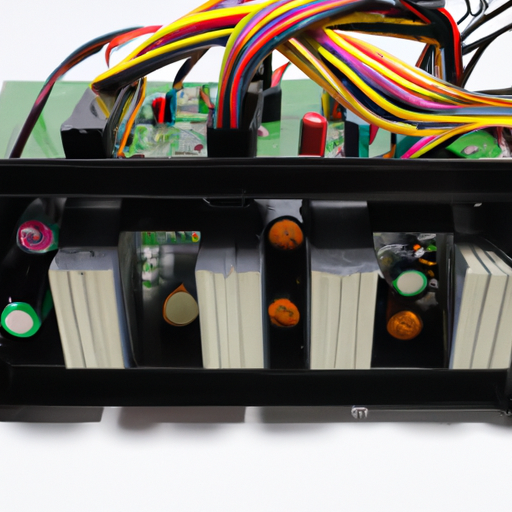
Power supplies are essential components in any electronic device, providing the necessary voltage and current to ensure proper operation. Whether it's a computer, a television, or a smartphone, all electronic devices require a reliable power supply to function effectively. In this article, we will explore the key features of power supplies and why they are crucial for the performance and longevity of electronic devices.

One of the most important features of a power supply is voltage regulation. Voltage regulation refers to the ability of the power supply to maintain a stable output voltage regardless of fluctuations in the input voltage or load. This is crucial for ensuring that the electronic device receives the correct voltage it needs to operate efficiently and safely. Without proper voltage regulation, the device may experience voltage spikes or drops, which can lead to malfunctions or even damage to the components.
2. Current Limiting
In addition to voltage regulation, power supplies also feature current limiting capabilities. Current limiting ensures that the power supply can deliver a maximum amount of current without exceeding its rated capacity. This is important for protecting the electronic device from overcurrent conditions, which can cause overheating and damage to the components. By limiting the current output, the power supply ensures that the device operates within safe limits and prevents potential hazards.
3. Efficiency
Efficiency is another key feature of power supplies. Efficiency refers to the ratio of output power to input power, and it indicates how effectively the power supply converts input voltage into usable output voltage. A high-efficiency power supply will waste less energy in the form of heat, resulting in lower operating temperatures and reduced energy consumption. This not only prolongs the lifespan of the power supply but also helps to save on electricity costs in the long run.
4. Overvoltage Protection
Overvoltage protection is a critical feature of power supplies that safeguards the electronic device from voltage spikes or surges. These sudden increases in voltage can occur due to lightning strikes, power grid fluctuations, or other external factors. Overvoltage protection ensures that the power supply shuts down or limits the output voltage when it detects an overvoltage condition, preventing damage to the device's components. This feature is especially important in areas prone to electrical disturbances or power outages.
5. Short Circuit Protection
Short circuit protection is another essential feature of power supplies that prevents damage to the device in the event of a short circuit. A short circuit occurs when there is a direct connection between the positive and negative terminals of the power supply, causing a sudden surge of current. Short circuit protection detects this abnormal condition and shuts down the power supply to prevent overheating and damage to the components. This feature is crucial for ensuring the safety and reliability of the electronic device.
6. Noise and Ripple Suppression
Noise and ripple suppression are important features of power supplies that ensure clean and stable output voltage. Noise refers to unwanted electrical signals that can interfere with the operation of the electronic device, while ripple refers to fluctuations in the output voltage. Power supplies with noise and ripple suppression capabilities filter out these unwanted signals, providing a smooth and consistent voltage output. This is essential for maintaining the performance and reliability of the device, especially in sensitive applications such as audio equipment or medical devices.
7. Size and Form Factor
The size and form factor of a power supply are also important considerations, especially in space-constrained applications. Power supplies come in various sizes and shapes, ranging from compact wall adapters to large desktop units. The size and form factor of the power supply should be compatible with the electronic device and its intended use. For example, a portable device may require a small and lightweight power supply, while a high-power workstation may need a larger and more robust unit. Choosing the right size and form factor ensures proper integration and optimal performance of the power supply.
8. Cooling and Thermal Management
Cooling and thermal management are crucial features of power supplies that help dissipate heat generated during operation. As power supplies convert electrical energy into heat, they can become hot under heavy loads or high ambient temperatures. Proper cooling mechanisms, such as fans or heat sinks, help to dissipate this heat and maintain the temperature within safe limits. Effective thermal management not only prolongs the lifespan of the power supply but also ensures reliable operation under varying conditions.
In conclusion, power supplies play a vital role in the performance and longevity of electronic devices. By providing stable voltage and current, regulating power output, and protecting against electrical disturbances, power supplies ensure the safe and efficient operation of electronic devices. Understanding the key features of power supplies and their importance can help users make informed decisions when selecting a power supply for their specific needs. Whether it's for a computer, a television, or a smartphone, a reliable power supply is essential for powering and protecting electronic devices.